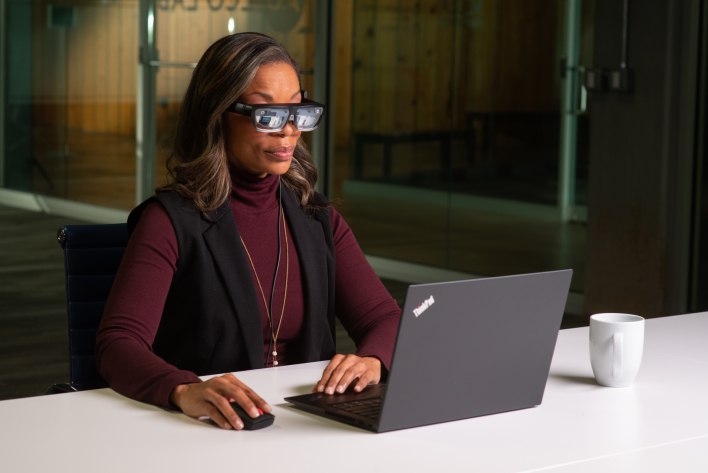Lenovo Unveils Sleek ThinkReality A3 Smart Glasses To Transform AR And VR Productivity

Augmented reality (AR) has had ups and downs over the years, from the original Google Glass in 2013 to Microsoft’s HoloLens in 2016 and the Enterprise Google Glass in 2019. Ultimately, the technology could prove to be incredibly useful, but it is a bit “out there” for most people. Now, Lenovo is entering the augmented reality ring at CES 2021 with the ThinkReality A3 Smart Glasses, which are some good-looking glasses that could boost AR's future.
According to Lenovo, the ThinkReality A3 glasses are part of a goal to “deliver intelligent transformation in business and bring smarter technology to more people.” They state that how we work, learn, and interact is changing, so companies are looking for new technologies to make things easier. This is where the ThinkReality A3 comes in, with its capabilities, such as virtual monitors, 3D visualization, immersive training, and more.

The smart glasses work by tethering to select Motorola devices or a PC over USB-C. They are powered by the Qualcomm Snapdragon XR1 Platform, which also powers Google’s Enterprise Google Glass. It has two 1080p displays, and 8MP RGB camera for capturing video, and dual fish-eye cameras for room-scale six degrees of freedom (6DoF) tracking.
When these glasses release in mid-2021, it seems there will be two models, a PC and an enterprise model. The PC edition will tether to a laptop or mobile workstation to create up to five virtual monitors to work on. As Lenovo explains, “Virtual monitors expand the value of PCs, creating more productivity, privacy, and immersive experiences for industries like finance, architecture, and engineering, as well as for any remote and mobile worker where space and privacy are limited.” The user is able to interact with and position those displays as they see fit when using Windows applications. Think of it as being a multi-monitor setup on steroids for power users when the ThinkReality A3 is tethered via a USB-C cable to a Windows PC.

The enterprise model will pair with select Motorola phones for hands-free AR tasks (also via USB-C). Commercial customers will be able to build, deploy, and manage mixed-reality content for the ThinkReality A3 goggles for whatever they need. Lenovo sees this being a perfect solution on factory floors and in retail industries to give workers access to vital information at a moment's notice. And since the smart glasses tether to a smartphone, it's a low-impact solution as well.
Overall, this is a cool and capable-looking AR headset, and it seems like it could be rather handy for work. Though we do not yet have a price, having two usage models could also allow for more consumer-friendly pricing. On the other hand, people spend upwards of $1,000 for a phone, so increasing productivity for that price would not be entirely absurd. Either way, it is an exciting advancement into AR, and we cannot wait to see more later in the year.

